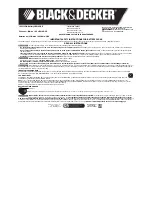
© 2021 by XOLTA
20
Figure 4.1:
Illustration of
maximizing self-
consumption mode
unctionality in the most
optimal situation
4.1.2 External control
The XOLTA outdoor BESS is able to react to power setpoints received from external systems. An
interface (web API) is provided which allows the user to decide the active power (P) and reactive power
(Q) controlling the battery system charge or discharge accordingly. This mode is ideal for users who
would like to develop their own control algorithm. It is also used for an installation functional check
when a XOLTA technician is doing on-site commissioning. There are two different formats of external
control:
• Single setpoint: System will work upon the single setpoint. The input can only be one value at a time.
• Schedule: System will work on a time schedule. It can be one value or a list of values.
The limitation of P-setpoints is constrained by the maximum apparent input/output power of the
inverter and the local grid capacity. Q-setpoints are limited by the power factor and the P measurement.
Positive P and Q-setpoint stand for charging and negative for discharging. A detailed XOLTA cloud
API instruction can be provided on request.
4.1.3 Grid voltage support
Grid voltage support is an operational mode intended to align with the distribution system operator’s
(DSO’s) requirements. Depending on the grid situation, the XOLTA System can offer different control
mechanisms to minimize the local grid voltage variations and meet the DSO requirements, as shown
in Figure 4.2 and 4.3.
Figure 4.2:
Exemplification of
the grid voltage
distribution with and
without grid voltage
support mode
Energy shifted by battery
Evening
Noon
Morning
Time Shift
Solar production
Consumption
0.200
0.175
0.150
0.125
0.100
0.075
0.050
0.025
0.000
227.5
230.0
232.5
235.0
Voltage [V]
Phase 3
Phase 3 support
Pr
obability density
237.5
240.0
242.5





































